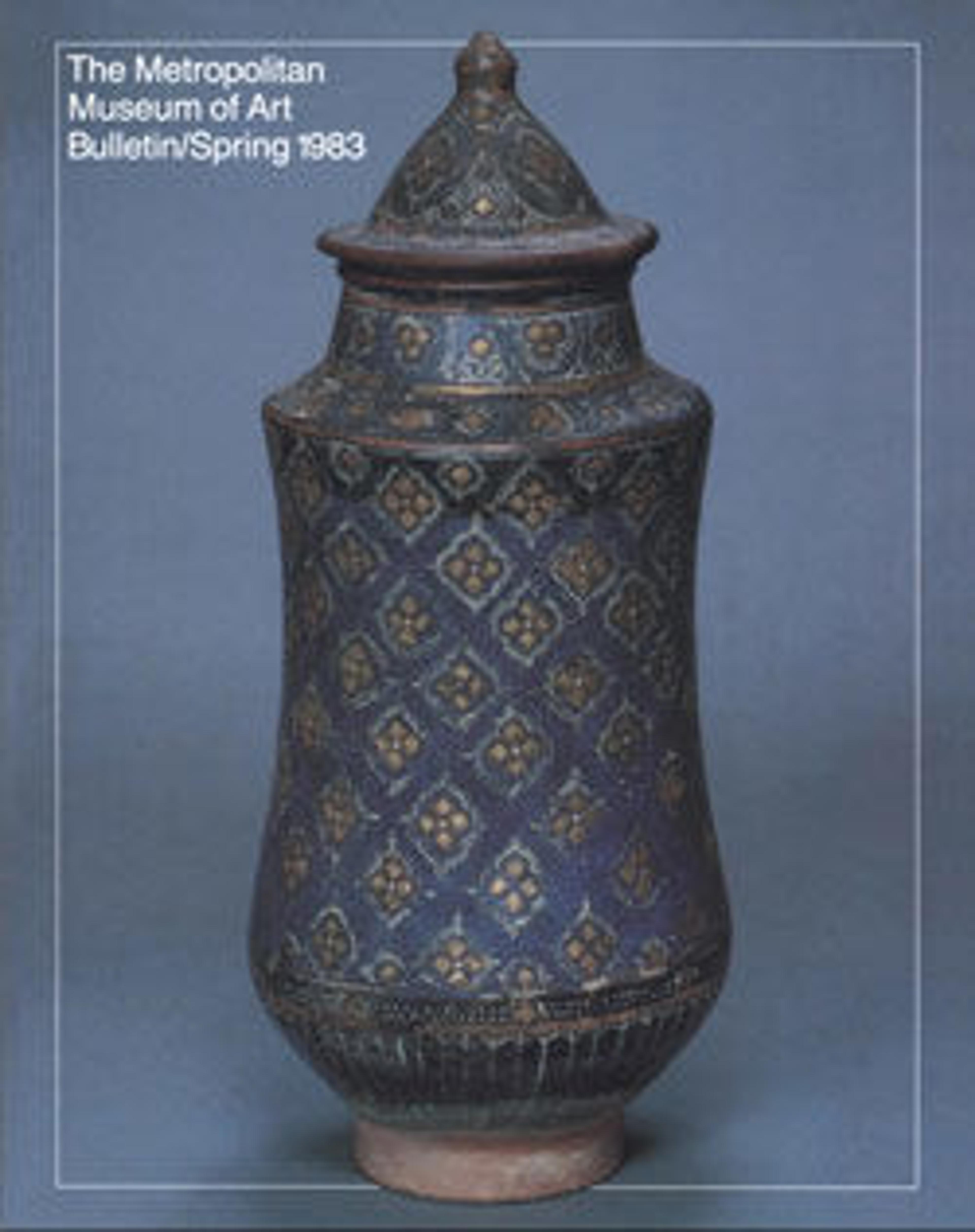Ring-Shaped Ewer
Molded ceramic vessels – both with and without glaze – were made in the earliest centuries of the Islamic period, but the technique seems to have lost popularity as artists turned their attention to other techniques, notably lusterware. With its molded and applied decoration and monochrome glazing, this ewer is typical of the Umayyad and early Abbasid period. The piece is made of two halves that have been joined together, with applied elements including a spout and what appear to be a foot and handle. The center was once decorated with an openwork panel that was attached to half of the body before the two halves were joined.
Artwork Details
- Title: Ring-Shaped Ewer
- Date: 8th century
- Geography: Made in Iran or Iraq
- Medium: Earthenware; molded and glazed
- Dimensions: H. 14 1/2in. (36.8cm)
- Classification: Ceramics
- Credit Line: Gift of Richard Ettinghausen, 1978
- Object Number: 1978.549.2
- Curatorial Department: Islamic Art
More Artwork
Research Resources
The Met provides unparalleled resources for research and welcomes an international community of students and scholars. The Met's Open Access API is where creators and researchers can connect to the The Met collection. Open Access data and public domain images are available for unrestricted commercial and noncommercial use without permission or fee.
To request images under copyright and other restrictions, please use this Image Request form.
Feedback
We continue to research and examine historical and cultural context for objects in The Met collection. If you have comments or questions about this object record, please contact us using the form below. The Museum looks forward to receiving your comments.
